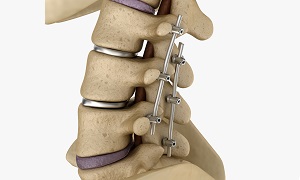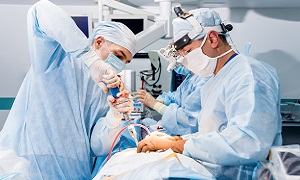Corpectomy
Corpectomy, also known as vertebrectomy, is a surgical procedure. It involves removing all or parts of the vertebral body to decompress the spinal cord and the nerves.
Purpose
Doctors usually recommend a corpectomy for neck or back pain. However, it is not the first option. It is only considered when non-operative measures like physical therapy and medications are not effective. He/she can also recommend it if your spinal cord is at risk of damage, the pain is severe, or you are experiencing numbness and/or weakness, in the arms and legs, or if you are experiencing loss of bladder control, or any difficulty in walking and coordinated movements, due to compression in the spinal cord.
Types
Corpectomy can be classified into various types, depending on its type:
- In a Cervical corpectomy, the damaged vertebrae and intervertebral discs, are removed surgically through the front of the neck.
- Lumar corpectomy, which is performed on the lower back.
- Thoracic corpectomy, which is performed in the chest region.
Preparation
First, your doctor will examine you and determine if surgery is required through tests such as MRI and CT scan. You will need to inform your doctor regarding all medications that you are taking as it is likely that you will need to stop taking some of them prior to your procedure. Overnight fasting might also be recommended by your doctor.
Procedure
Decompression
Depending on your surgeon’s approach, an incision is going to be made on the anterior or posterior. Next, the muscles and tissues are moved aside, in order to reveal the bones of the spinal column. The arteries, nerves, and other structures are also protected from injury.
Your doctor identifies the right disc to be removed, with the help of an X-ray. Next, your surgeon is going to remove both discs above and below the damaged vertebrae, which is followed by the removal of the damaged vertebrae, all the way back to the decompression. This decompression helps to relieve pressure on the spinal cord and nerves.
If any bone spurs are found sticking off the back of the vertebrae, they are removed as well.
Spinal Fusion
After the procedure
Shortly after the surgery is over, you are going to wake up in a recovery room. Then, the tube down your windpipe is going to be removed. Your vitals will be monitored for an hour or two before you are shifted to your room or ward. You will need to stay in the hospital for some days, till you are able to recover fully. IV lines are going to be used for fluids and drugs, till you are able to eat again normally. A physical therapist will be helping you with an exercise routine so that you can recover faster.
Risks & complications
Certain complications are possible with a corpectomy. Sometimes, the operation can fail to relieve symptoms, and pain might even increase after the procedure. Infections may also occur, though they occur in less than 1 percent of spinal surgeries. The patient can also experience hip pain, excessive bleeding, difficulty in breathing or eating, or pseudoarthrosis.
In some cases, hardware fracture is also a possibility, if the hardware used in the procedure breaks before the surgery site is completely healed. It can also result in broken or loosened plates and screws.



